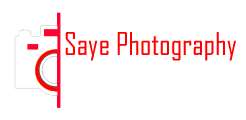A roof inspection is a little bit challenging for many Roofing contractors because of the phobia of height. Inspectors are now using photos during roof inspections and also include the pictures in their inspection reports. As a homeowner, you can use the photos to understand better why your roof is leaking and plan for roof repairs.
Photos make it easier to explain problems and ease the inspection process. It is a little bit difficult to accompany an inspector on the roofs so that he can explain or show you the issues in your roof. Many people also not comfortable with heights or do not know how to walk on the roof safely.
Photography is making it easier for inspectors and homeowners to assess the condition of roofs and plan for repairs.
What type of camera is best for roof inspections?
The best camera for roof inspections is a digital camera. Film cameras are bulky and make it challenging to analyze the photos. Digital cameras suit the job well since they provide digital photos that can be fed into an inspection software and analyzed. The digital photos can also be incorporated in the inspection report easily.
Digital cameras give you the option to choose either low-resolution photos or high-resolution photos. Low resolution will allow an inspector to make the images small and save some email bandwidth when sending the photos. High resolution provides high-quality photos that show all the details in the photo and make analysis easy.
With a digital camera, you can take thousands of photos and store them in a storage card. With a digital camera, you save time that would have been wasted waiting for the photos to be developed if you were using a film camera. You can also record videos that you can include in an inspection presentation.
Two hundred dollars can get you a decent digital camera to use for roof inspections.
What are the features of a decent inspection digital camera?
The lens
The digital camera you use for inspection should have an inbuilt telephoto lens. The lens should be strong enough to zoom into objects that are far away. Go for the optical zoom rather than the digital zoom. Strong optical zooms provide better images. The lens should also have an electronic image stabilizer to prevent long shots from becoming blurry, especially if you have some shaky hands.
Macro
Your digital camera also needs a macro feature to take close-up photos. A macro-feature will help you to take close-up photos at inch-length. The macro feature might not be required for roof inspections but might come in handy in some special situations.
Flash
A strong flash will be useful when shooting in dark places such as chimney flue and attics.
Case and Strap
Cases and straps will protect your camera from damage when you are up on the roofs. Straps help to hold your camera while climbing the ladders, and the cases protect the camera from damage in case of a fall.
Photography is one of the technological advancements that have revolutionized many industries. Roof inspection and roof repairs have benefited from photography with photos now being used to inspect roofs.
